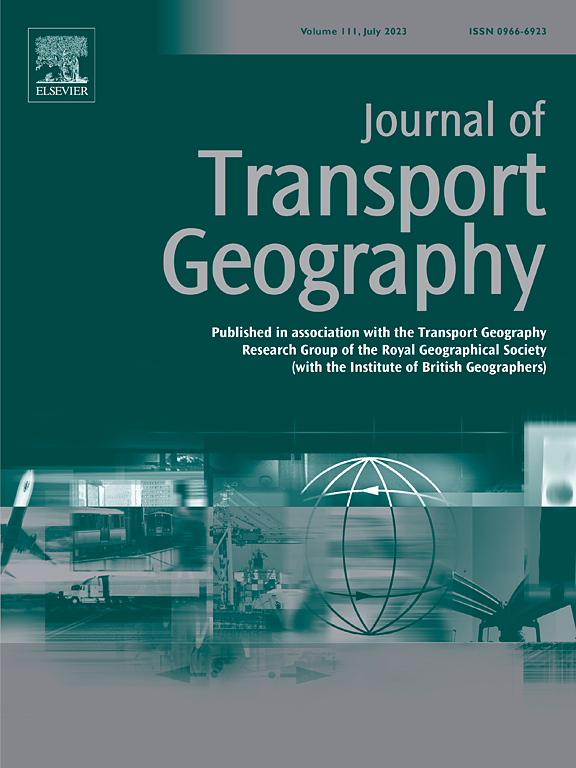Unveiling gender disparities in metro usage using gender-inclusive smart card data: Evidence from Nanjing, China
IF 6.3
2区 工程技术
Q1 ECONOMICS
引用次数: 0
Abstract
Metro smart card data has enabled extensive research on usage patterns, yet most studies focus on overall station-level ridership trends, often neglecting the influence of gender on ridership patterns due to the lack of gender information. To fill this gap, this study compares the metro usage patterns between males and females utilizing smart card data with gender information from Nanjing, China. Then, multiple machine learning models are established to explore the determinants of ridership across gender groups. Results indicate that males with longer travel time and distance constitute 55.5 % of metro trips, and the time periods when males have more ridership peak at 7:00 on weekdays and at 10:00 and 17:00 on weekends. On weekdays, metro ridership in the urban area is high for both genders, with males significantly outnumbering females in ridership, while certain suburban stations show higher female ridership. In terms of spatial distribution, both males and females are mainly distributed in stations located in the main urban area on weekdays. On weekends, the proportion of female ridership slightly increases, particularly in urban areas, rising from 31.80 % to 32.14 %. Machine learning models show road density and workplace POIs exert a stronger influence on male ridership, contributing 30.81 % and 17.87 %, respectively. Residential POIs (38.24 %) and educational POIs (4.11 %) play a larger role in female ridership. Housing prices show a threshold effect on male ridership. The findings on gender disparities in metro usage underscore equity concerns and offer policy implications for equitable and efficient metro operations.
利用性别包容性智能卡数据揭示地铁使用中的性别差异:来自中国南京的证据
地铁智能卡数据使人们能够对使用模式进行广泛的研究,但大多数研究都集中在车站层面的整体客流趋势上,由于缺乏性别信息,往往忽视了性别对客流模式的影响。为了填补这一空白,本研究利用中国南京的智能卡数据和性别信息比较了男性和女性的地铁使用模式。然后,建立多个机器学习模型来探索跨性别群体乘客的决定因素。结果表明,出行时间和距离较长的男性占地铁出行总量的55.5%,男性出行高峰时段为工作日7:00和周末10:00和17:00。在工作日,城市地区的地铁客流量无论男女都很高,男性客流量明显超过女性,而某些郊区车站的女性客流量更高。在空间分布上,男性和女性在工作日主要分布在位于主城区的站点。周末,女性乘客的比例略有上升,尤其是在城市地区,从31.80%上升到32.14%。机器学习模型显示,道路密度和工作场所poi对男性乘客的影响更大,分别贡献了30.81%和17.87%。住宅poi(38.24%)和教育poi(4.11%)在女性乘客中发挥更大的作用。房价对男性乘客表现出门槛效应。关于地铁使用中的性别差异的调查结果强调了公平问题,并为公平和有效的地铁运营提供了政策影响。
本文章由计算机程序翻译,如有差异,请以英文原文为准。
求助全文
约1分钟内获得全文
求助全文
来源期刊

Journal of Transport Geography
Multiple-
CiteScore
11.50
自引率
11.50%
发文量
197
期刊介绍:
A major resurgence has occurred in transport geography in the wake of political and policy changes, huge transport infrastructure projects and responses to urban traffic congestion. The Journal of Transport Geography provides a central focus for developments in this rapidly expanding sub-discipline.
 求助内容:
求助内容: 应助结果提醒方式:
应助结果提醒方式:


